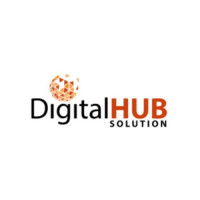How should a Web Development Company in the USA Use Frameworks?

In this digitally powered era, the demand for website development services is growing in leaps and bounds. It’s because every company wants to have an enthralling and engaging website for a strong online presence. So, if you are a web development company in the USA, you must know how to use website development frameworks and tools to satisfy the requirements of your clients.
Therefore, we have written this blog to let you know about the best ways to use web development tools and frameworks. Aside from that, we will also tell you about the pros and cons of some frameworks and tools to ease your selection.
Best Practices to Use Frameworks and Tools for Web Development
If you want to benefit most from the web development tools and frameworks, you need to stick to the following best practices. Following them will surely result in efficient website development, maintainable code, and successful project outcomes. So, use the web development frameworks and tools in the ways provided below:
1. Understand the Tool or Framework:
You should take some time to gather detailed information about the framework or tool you are using. The better you understand its core concepts, features, and best practices, the easier it will be for you to benefit from its full potential.
2. Stick to Coding Standards:
As a web development company in the USA, you must adhere to coding standards and guidelines that are provided by the tool or framework documentation. If coding practices are consistent, it will result in enhanced code readability and maintainability.
3. Enhance Performance:
You should rely on performance optimization techniques that are offered by the framework or tool. Doing it will enable you to make sure that there is optimal user experience and fast loading times.
4. Manage Errors Carefully:
Use error handling mechanisms so that you can offer informative error messages and deal with unexpected situations. For that, you should use tools, such as error boundaries in React.js to find out errors.
5. Utilize Version Control:
Using version control systems like Git can allow you to track changes, work in harmony with team members, and revert to the last versions if necessary. Stick to branching strategies to have efficient development workflows.
6. Modularize Code:
Your code needs to be broken down into modular components for reusability, scalability, and maintainability. Stick to best practices such as component-based architecture for front-end frameworks.
7. Consider Security:
Common vulnerabilities like cross-site scripting (XXS) and SQL injections must be kept away from your application by using security best practices. Therefore, as a web development company in USA, sanitize user inputs and utilize safe authentication mechanisms.
8. Conduct Tests:
Make sure that you write unit tests, integration tests, and end-to-end tests for the assurance that all is okay with code quality and functionality. As a matter of fact, you’d better use testing tools and frameworks for the automation of testing processes.
9. Work on Accessibility:
Make sure that your web application is easily accessible to those users who have disabilities. For that, stick to accessibility guidelines such as WCAG (Web Content Accessibility Guidelines). Utilize ARIA and HTML attributes.
10. Keep Track of Performance:
Rely on tools Chrome DevTools, Lighthouse, or performance monitoring services so that you can monitor the performance of your application. Doing this will enable you to identify bottlenecks and work on performance accordingly.
11. Keep Learning and Improving:
As a website creation company, you must stay updated with the current trends and best practices in web development. For this, your developers need to spend their time on attending workshops, conferences, and online courses to boost their knowledge and sharpen their skills.
12. Document Everything:
It’s advised to every web development company in the USA or anywhere in the world to document its code, project structure, and configuration. Documentation means convenient collaboration, onboarding of new team members, and future maintenance. To attain this, rely on tools, such as JSDoc, to document JavaScript code.
Considerations to Choose the Best Frameworks and Libraries
There are various web development tools and frameworks. However, when it comes to choosing them, you’d better take into account factors like their ease of use, performance, scalability, community, and suitability according to the needs of a project.
Some tools and frameworks are listed below along with their plus and minus points to facilitate your selection:
1. React.js:
Plus points:
It offers strong community support and ecosystem.
React. js has component-based architecture for reusability.
It has virtual DOM for efficient updates.
Minus points:
It needs extra libraries for state management, such as Redux.
There is a steep learning curve for beginners.
2. Angular:
Plus points:
It’s a full-featured framework that has built-in tools.
You can have dependency injection for modular development.
It offers two-way binding for real-time updates.
Minus points:
It has a complex and opinionated structure.
In comparison to other frameworks, it has a steeper learning curve.
3. Node.js:
Plus points:
It has non-blocking I/O for high performance.
You can have a large package ecosystem with NPM.
It offers a server-side JavaScript runtime to build scalable applications.
Minus points:
Its single-threaded nature can limit CPU-bound tasks.
It needs careful handling of callback functions for asynchronous operations.
4. Vue.js:
Plus points:
This is a lightweight framework with easy integration.
It has simple syntax and a gentle learning curve.
The framework is famous for two-way data binding and virtual DOM.
It’s considered one of the best frameworks for front-end website development.
Minus points:
In comparison to React and Angular, it has a smaller ecosystem.
It has limited corporate backing if compared to Angular.
5. Visual Studio Code (VS Code):
Plus points:
It’s lightweight and has a feature-rich code editor.
VS Code has built-in Git integration and debugging tools.
It is famous for extensive customization through extensions.
Minus points:
Some of its features may need configuration for optimal use.
It can be resource-intensive for larger projects.
Conclusion
As a web development company in the USA, you should stick to the best practices to use frameworks and tools. These practices include following coding standards, having a deep understanding of tools and frameworks, handling errors carefully, etc.
Note: IndiBlogHub features both user-submitted and editorial content. We do not verify third-party contributions. Read our Disclaimer and Privacy Policyfor details.


